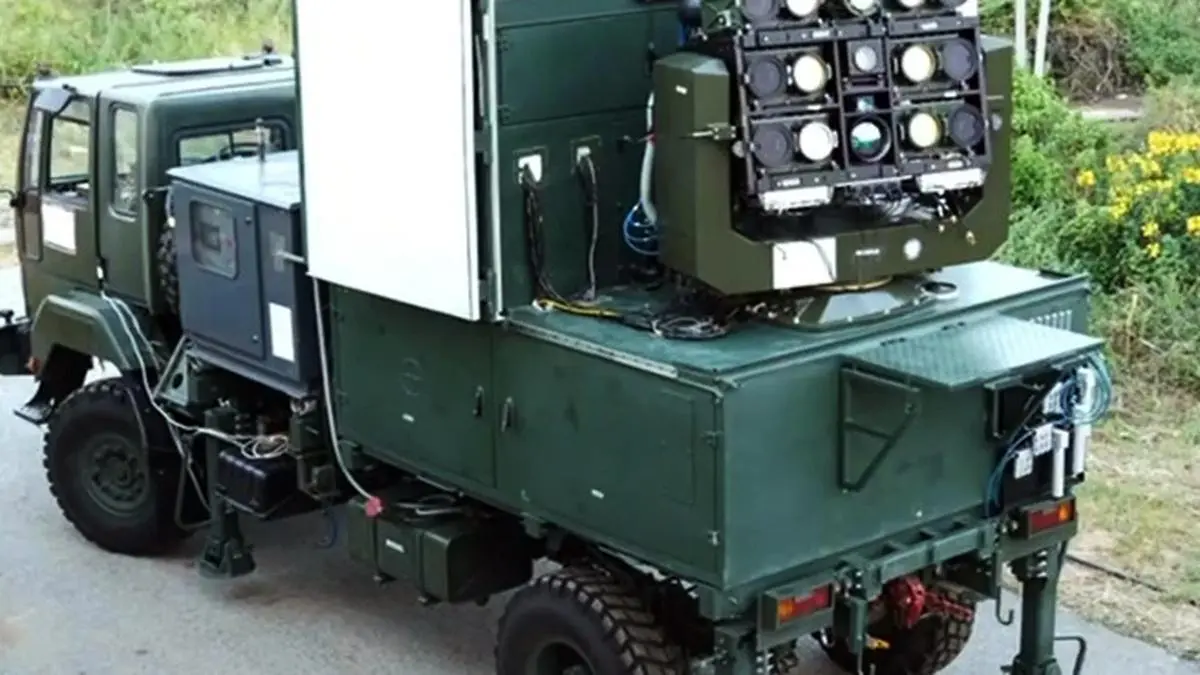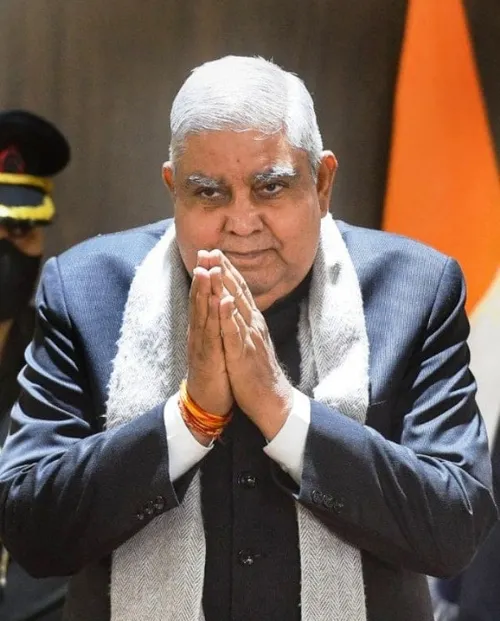
A laser weapon developed by the Defence Research and Development Organisation to shoot down aerial targets
| Photo Credit:
ANI
Recently, the news of a Turkish cargo aircraft’s brief stopover at Karachi airport set off a wave of conspiracy theories, given the escalating tensions between India and Pakistan over the terrorist attack on tourists at Pahalgam in Kashmir. Turkey said the halt was for refuelling, but not many bought that line.
A few defence analysts have surmised that Turkey may have supplied Pakistan a planeload of drones, possibly the Bayraktar TB2, which has proved itself in many conflicts.
If Pakistan sends across a swarm of these, can India stand up to the challenge?
On April 13, the Centre for High Energy Systems and Sciences (CHESS), Hyderabad, which is part of the Defence Research and Development Organisation (DRDO), announced it had successfully tested a ‘directed energy weapon’ (DEW) — which can send a 30 kW laser beam to a target and incapacitate it structurally. The significance of the timing is not lost on anyone — the DRDO has been working on the technology for at least 13 years, only to taste success at an opportune juncture.
The use of lasers in cutting hard materials, such as metal, is nothing new. Remember the scene from Goldfinger?
James Bond, held captive by the villain Goldfinger, is spread-eagled on a table, even as a laser beam cuts through the table and advances menacingly towards Bond’s groin. It would have slit him alright, but the debonair spy talks his way out of the mortal danger and ultimately kills Goldfinger.
While industrial lasers are used for precision cutting in controlled environments, laser-based weapons need to destroy or disable fast-moving targets that likely have stealth capabilities and are smart.
Only three countries — the US, China and Russia — have DEWs. India will join this elite club.
What are DEWs?
The US Office of Naval Research describes DEWs as “electromagnetic systems capable of converting chemical or electrical energy to radiated energy and focusing it on a target, resulting in physical damage that degrades, neutralises, defeats or destroys an adversarial capability”.
DEWs are mainly of three types: High-energy laser (HEL), which uses a focused, invisible beam, typically in infrared wavelengths, to destroy a target; high-power microwave (HPM), which uses electromagnetic radiation in microwave wavelengths to burn electronics, such as sensors, in a target; and millimetre wave (MMW) systems, which operate at low wavelengths for non-lethal applications, such as crowd dispersal.
HPMs have less punch, but can bring down a swarm of projectiles, such as drones, says Dr Ratnajit Bhattarjee, Head, Manekshaw Centre of Excellence for National Security Studies and Research, IIT-Guwahati.
An HEL can blow a target out of the sky, while an HPM can attack multiple targets simultaneously and disable them while not destroying them completely. The laser beam, pulsed or continuous, is 2,00,000 times more powerful than the laser pointer that people use for power-point presentations.
High-energy laser beams need energy. The power source should accompany the system when mounted on a battlefield truck. While batteries, supercapacitors and even diesel generators can do the job, the challenge is to ensure they are long-lasting.
Managing the heat they generate is the second challenge, calling for substantial cooling capacity, which again needs power. Typically, a 30-kW system may require 150 kW (200 HP) power. Yet another challenge is to miniaturise the system for use on fighter aircraft and UAVs. High-power microwave devices need relatively less power to energise microwave generators like magnetrons or klystrons.
India’s tryst with DEW
DRDO’s 30-kW HEL is a milestone, but still considered a testbed rather than a fully integrated battle weapon. It was shown to destroy aerial targets of up to 5 km range. It is a precursor to a more advanced 100-kW DEW, christened DURGA-II (directionally unrestricted ray-gun array), and a more advanced 300-kW Surya. These will take a few years to become fully operational.
So, if Pakistan threatens with armed drones, India is not quite in a position to snap its fingers and say, “bring them on” — but it is not helpless either. Indian startups like Big Bang Boom Solutions, Paras and Tonbo Imaging have anti-drone solutions, though of less power and range. And, of course, there are other ways of neutralising drones, namely using guns and jammers.
The need of the hour is high-power, indigenous machines. While these have long been in development, there appears to be an inflection point, and the Army will have them in a matter of years.
More Like This
Published on May 4, 2025
Anurag Dhole is a seasoned journalist and content writer with a passion for delivering timely, accurate, and engaging stories. With over 8 years of experience in digital media, she covers a wide range of topics—from breaking news and politics to business insights and cultural trends. Jane's writing style blends clarity with depth, aiming to inform and inspire readers in a fast-paced media landscape. When she’s not chasing stories, she’s likely reading investigative features or exploring local cafés for her next writing spot.






